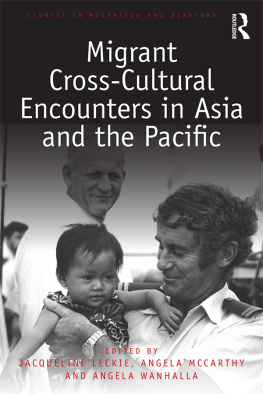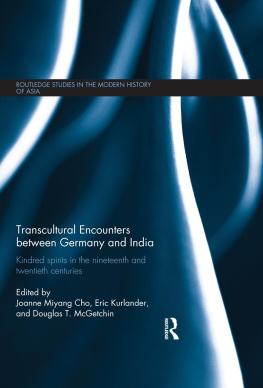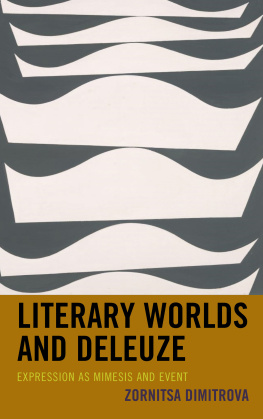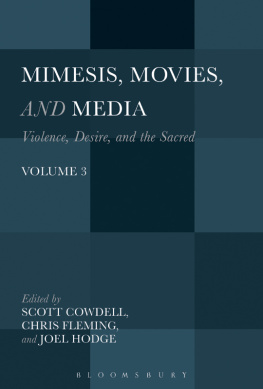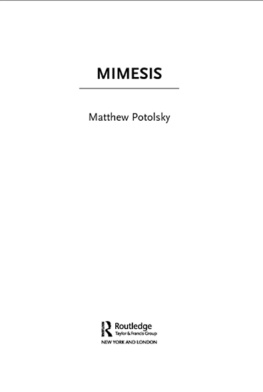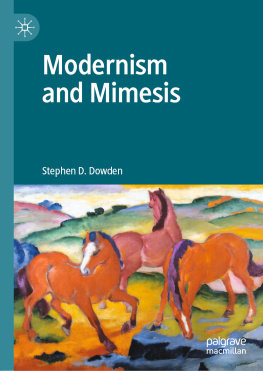MIMESIS AND PACIFIC TRANSCULTURAL ENCOUNTERS
ASAO Studies in Pacific Anthropology
General Editor: Rupert Stasch, Department of Archaeology and Anthropology, University of Cambridge
The Association for Social Anthropology in Oceania (ASAO) is an international organization dedicated to studies of Pacific cultures, societies, and histories. This series publishes monographs and thematic collections on topics of global and comparative significance, grounded in anthropological fieldwork in Pacific locations.
Volume 1
The Anthropology of Empathy: Experiencing the Lives of Others in Pacific Societies
Edited by Douglas W. Hollan and C. Jason Throop
Volume 2
Christian Politics in Oceania
Edited by Matt Tomlinson and Debra McDougall
Volume 3
The Death of the Big Men and the Rise of the Big Shots: Custom and Conflict in East New Berlin
Keir Martin
Volume 4
Creating a Nation with Cloth: Women, Wealth, and Tradition in the Tongan Diaspora
Ping-Ann Addo
Volume 5
The Polynesian Iconoclasm: Religious Revolution and the Seasonality of Power
Jeffrey Sissons
Volume 6
Engaging with Strangers: Love and Violence in the Rural Solomon Islands
Debra McDougall
Volume 7
Mortuary Dialogues: Death Ritual and the Reproduction of Moral Communities in Pacific Modernities
Edited by David Lipset and Eric K. Silverman
Volume 8
Mimesis and Pacific Transcultural Encounters: Making Likenesses in Time, Trade, and Ritual Reconfigurations
Edited by Jeannette Mageo and Elfriede Hermann
Mimesis and Pacific Transcultural Encounters
Making Likenesses in Time, Trade, and Ritual Reconfigurations
Edited by
Jeannette Mageo and Elfriede Hermann
Published in 2017 by
Berghahn Books
www.berghahnbooks.com
2017 Jeannette Mageo and Elfriede Hermann
All rights reserved. Except for the quotation of short passages for the purposes of criticism and review, no part of this book may be reproduced in any form or by any means, electronic or mechanical, including photocopying, recording, or any information storage and retrieval system now known or to be invented, without written permission of the publisher.
Library of Congress Cataloging-in-Publication Data
Names: Mageo, Jeannette Marie, editor. | Hermann, Elfriede, editor.
Title: Mimesis and Pacific transcultural encounters : making likenesses in time, trade, and ritual reconfigurations / edited by Jeannette Mageo and Elfriede Hermann.
Description: New York : Berghahn Books, [2017] | Series: ASAO studies in Pacific anthropology ; volume 8 | Includes bibliographical references and index.
Identifiers: LCCN 2017015942 (print) | LCCN 2017040615 (ebook) | ISBN 9781785336256 (e-book) | ISBN 9781785336249 (hardback : alk. paper)
Subjects: LCSH: Ethnology--Oceania. | Pacific Islanders--Cultural assimilation.
Classification: LCC GN662 (ebook) | LCC GN662 .M48 2017 (print) | DDC 306.0995--dc23
LC record available at https://lccn.loc.gov/2017015942
British Library Cataloguing in Publication Data
A catalogue record for this book is available from the British Library
ISBN: 978-1-78533-624-9 hardback
ISBN: 978-1-78533-625-6 ebook
Contents
Jeannette Mageo
Francesca Merlan
Jeannette Mageo
Sarina Pearson
Joyce D. Hammond
Sergio Jarillo de la Torre
Roger Ivar Lohmann
Elfriede Hermann
Laurence Marshall Carucci
Doug Dalton
Joshua A. Bell
List of Figures
Acknowledgments
Our deepest gratitude goes to the Pacific Islanders who taught us about their transcultural practices and drew us into mutual mimesis. We would also like to thank all the colleagues and friends who discussed our research findings with us, especially at the annual meetings of the Association for Social Anthropology in Oceania (ASAO). Deborah Gewertz and Frederick Errington gave us important comments at an early stage in the project, Michael Taussig sent us his thoughts at a later stage, and Joshua Bell provided provocative discussions of our contributions at just the right time, all of which we gratefully acknowledge. Joyce Hammond facilitated the production of the research map with the assistance of Western Washington University. Rixanne Wehren, a professional mapmaker, expertly drew the map. To all of them go our many thanks.
In addition, we are grateful to the anonymous reviewers for their close reading and valuable suggestions. Our warm thanks also go to Steffen Herrmann for his commitment to the project and his generous professional assistance with preparing the manuscript and illustrations for publication. Also, we are greatly indebted to Rupert Stasch, the general editor of the ASAO Studies in Pacific Anthropology, for his valuable advice and support throughout the submission, review, and publication process.
Map 0.1. Chapter Study Sites
PART I

Introduction
Introduction
Mimesis in Theory and in Cultural History
JEANNETTE MAGEO
How do people meet and fathom one another in transcultural encounters? What do they reap from such encounters? How do they bridge boundaries, reaching out to a transcultural Other? Alternatively, how do they establish boundaries or fail to do so, falling instead under the spell of a transcultural Other? Our answer in this volume is this: through mimesis. In the West, the concept of mimesis has been around at least since Plato, who sees art as mimesis and the artist as a copyist. For Plato in The Republic (1968) life is a dim copy of ideal forms and art a yet dimmer copy. Aristotle in the Poetics (1927) also sees art as mimesis, but for him art creates a special contemplative state of mind, a balance point or special zone poised between identification with a flawed hero and the distance inspired by his tragic fate.
In this introduction I take mimesis to be making likenesses and, like Aristotle, a way to negotiate identification and dis-identification. Making likenesses can be manifest in performances (mime or parody, for example) or productions (ritual or art), or can simply proceed within a persons mind. Indeed, Pacific Islanders in the arts of caricature, theater, costume, carving, and more, have long used mimesis to contemplate transcultural encounters as many of the essays to follow show. I begin here by offering a model of mimesis as a mode of thinking, feeling, and contemplation, one that suggests how this mode of processing experience lends itself to intercultural identifications and dis-identifications and can help bring to light Pacific Islanders and their visitors mental and emotional reactions to encounters between them.










